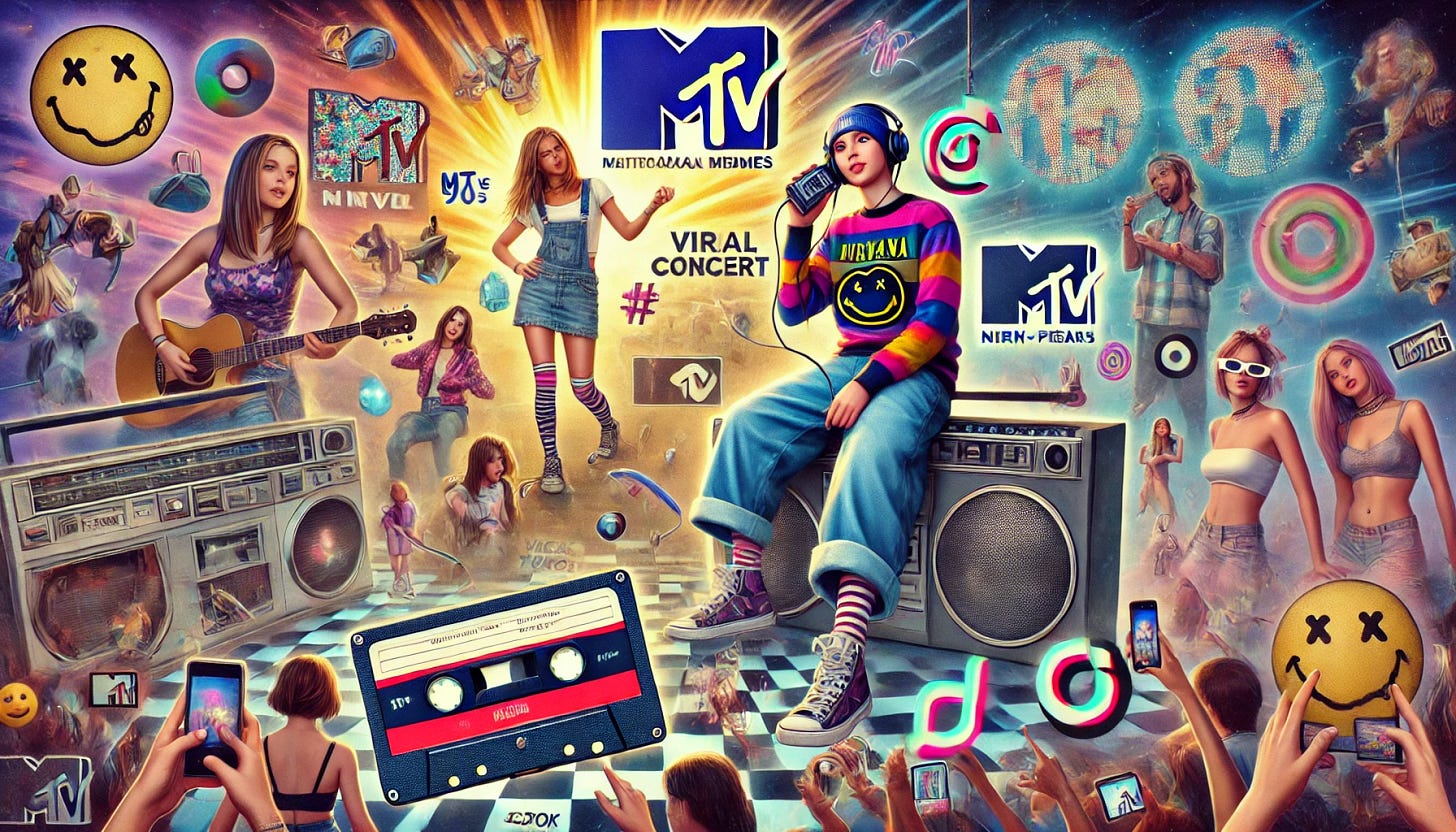The Music Meme Time Machine
The music industry today is obsessed with viral TikTok dances and algorithm-friendly hooks.
Artists and labels chase the digital ripple effect, believing this is something entirely new. You feel the pressure of an always-on algorithm demanding your creativity.
But here's the truth: music has always been memetic.
In the 1990s, before smartphones and social platforms, artists created cultural shorthand that spread person-to-person:
Britney Spears' schoolgirl outfit wasn't just a costume—it was a visual hook that became instantly recognizable worldwide.
The Macarena wasn't just a song—it was a participatory ritual that turned listeners into performers.
Nirvana's smiley face logo wasn't just merch—it was a wearable symbol that signaled identity and taste.
These weren't called memes then (unless you read Richard Dawkins' "The Selfish Gene" of course), but they functioned identically: memorable, replicable units of culture that fans could share, remix, and own.
The mechanisms were different: MTV instead of TikTok, cassette tapes instead of shares, concert t-shirts instead of profile pictures. But the human psychology was identical.
What can today's artists learn?
Create portable moments. What visual, lyrical, or sonic element can fans carry with them?
Enable participation. How can listeners become co-creators?
Think beyond the platform. The most powerful cultural artifacts transcend their distribution channels.
The best artists understand they're not just making music—they're creating cultural currency that people exchange in their everyday lives.
The tools change. Human connection doesn't.


